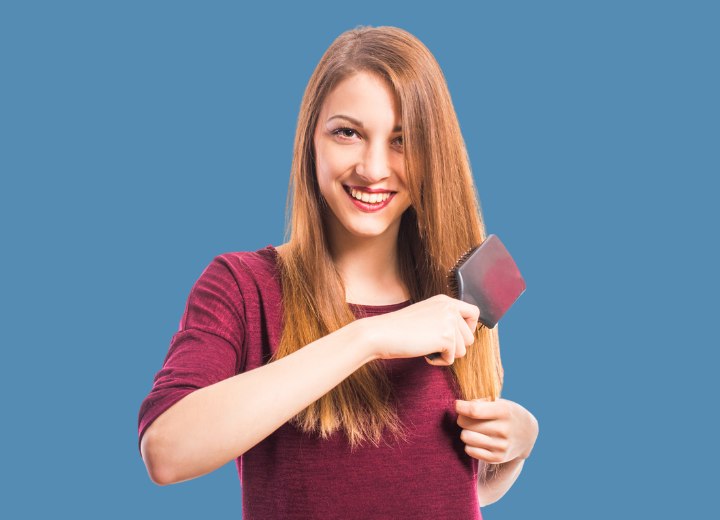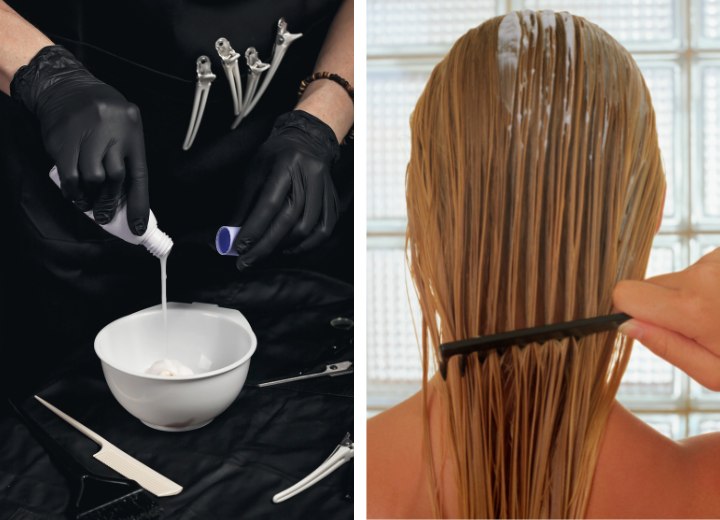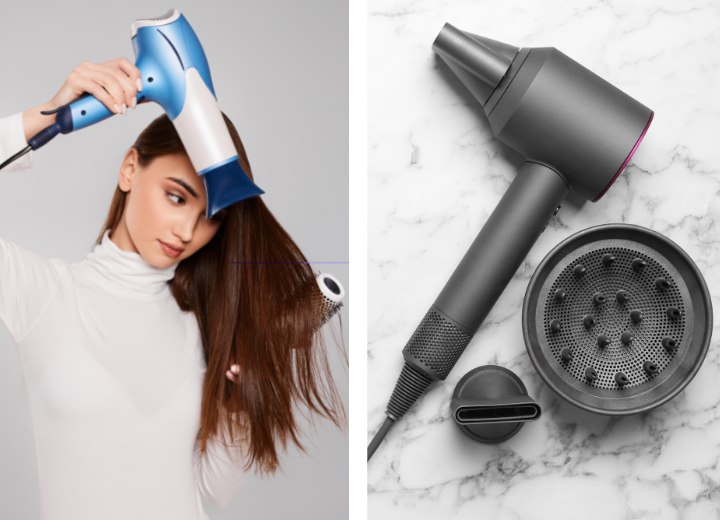Tips to Great Hair (2)

8. If you color your hair, use color-protective products. Chemical treatments such as coloring can damage hair, as the chemicals have to penetrate the outer layer of the hair (or cuticle) in order for the hue to be absorbed. Color-protective products are specially designed to minimize dryness, keep color true and prevent damage.
They typically have more nutritious ingredients, strip less color, and are less abrasive. They can also maximize the time between color retouch services, so the extra cost is offset by fewer services per year.
Many people make the mistake of assuming that because they go back for "retouch" services every 6-8 weeks, this is the life-span of chemical services. This is not true. Once you have exposed your hair to chemical treatments, it will always be "chemically treated" hair from that point on until you stop the treatments and start growing out and trimming away the chemically treated parts.
Even if you haven't had a perm or straightening service in months and your hair looks and feels fine, you need to be careful with how you treat it. Until it is removed by cutting, that portion of the hair strand will always be more prone to stresses from styling and other environmental factors.

Another tip for more successful deep conditioning is to cover the hair coated with conditioner with a plastic cap and wrap the head in a turban made from a towel that has been freshly pulled from a hot dryer. As the heat penetrates and the conditioner settles into the hair shaft, you can enjoy the luxurious feel of a warm towel wrapped around your head.
11. Try an ionic hairdryer. Ions are atoms with either a positive or negative charge. These particular hairdryers bathe your hair in negative ions, which help break up water molecules faster and cancel out hair-damaging positive ions. This allows the ionic hairdryer to dry the hair using less heat, thus causing less stress to the hair. Also, your hair drying time is halved.
12. Use your hairdryer effectively. Most dryers come with attachments that most people overlook. If you want to get your hair smooth and straight, just use the concentrator nozzle on your hairdryer. This is the best way to prevent frizz, as it focuses the airflow on individual sections. By directing the airflow away from the scalp along the hair shaft, you keep the cuticles smooth and flat, resulting in smooth, shiny hair.
Also, without a nozzle, the dryer's grille gets very hot; if your hair gets too close to it, it can cause damage and/or breakage. For curls, use the diffuser attachment to gently surround your hair with air. Use your fingers or a pick to gently lift the curls and allow the air to circulate without breaking them up too much.

14. Use the right accessories. This is where most women do the greatest damage to their hair. Buying and using cheap hair accessories can have cumulative damaging effects that add up much more quickly than you may expect. Look for accessories that are carefully coated to prevent snags and pulling on the hair.
Don't use clips or binders with exposed metal that comes into contact with the hair. When possible, use claw clips to secure the hair instead of elastics or other traditional barrettes. Treat your hair gently and it will flourish.
©Hairfinder.com